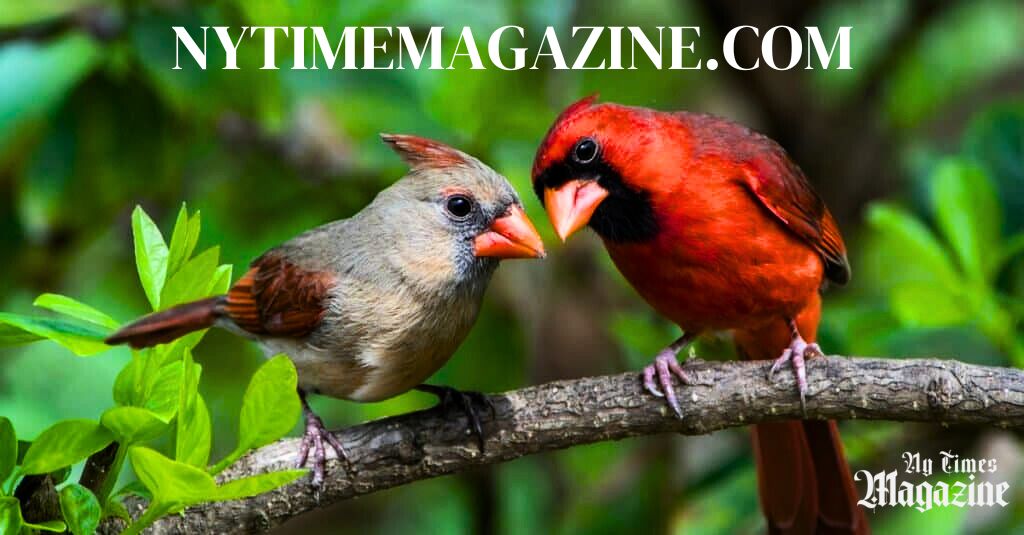Contents
- 1 Introduction:
- 2 What Color Are Baby Cardinals?
- 3 How Long Does It Take for Baby Cardinals to Turn Red?
- 4 Do Baby Cardinals Stay with Their Parents?
- 5 How Do You Tell If It’s a Cardinal?
- 6 Creating a Cardinal-Friendly Environment:
- 7 Capturing Cardinal Moments:
- 8 Bird watching Etiquette:
- 9 The Symbolism of Cardinals:
- 10 Conservation Considerations:
- 11 What do baby cardinals eat?
- 12 When do baby cardinals leave the nest?
- 13 Are baby cardinals at risk from predators?
- 14 Observing Cardinals throughout the Seasons:
- 15 Engaging in Citizen Science:
- 16 Conclusion:
Introduction:
Have you ever spotted a family of cardinals in your backyard and wondered about the adorable, fluffy creatures tagging along? Baby cardinals, though not as vibrant as their adult counterparts, possess a unique charm of their own. In this article, we’ll explore the fascinating world of baby cardinals , answering questions about their appearance, development, behavior, and how to identify them.
What Color Are Baby Cardinals?
One of the most common questions bird enthusiasts ask is about the coloration of baby cardinals. Unlike the striking red feathers of adult cardinals, baby cardinals are more subdued in their appearance. These fledglings typically have a brownish-gray plumage, which serves as effective camouflage in their natural surroundings. This earthy coloration helps them blend into their environment and avoid predators during their vulnerable early stages.
How Long Does It Take for Baby Cardinals to Turn Red?
The transformation from the subtle hues of brown and gray to the iconic red plumage of adult cardinals is a captivating process. It generally takes several months for baby cardinals to develop their distinctive red feathers. As they mature, their plumage gradually transitions, and by the time they reach adulthood, the vibrant red coloration emerges. Patience is when observing these young birds, as their journey to becoming the bright cardinals we recognize is a gradual and beautiful one.
Do Baby Cardinals Stay with Their Parents?
The family dynamics of cardinals involve a degree of independence for the young ones. Once baby cardinals fledge from the nest, they start exploring their surroundings while still being supervised by their parents. However, unlike some bird species, cardinals don’t stay overly dependent on their parents for an extended period. As the fledglings become more self-sufficient, they gradually distance themselves from the parental care but may remain in the general vicinity.
How Do You Tell If It’s a Cardinal?
Identifying a cardinal, whether adult or juvenile, can be an exciting challenge for birdwatchers. While adult cardinals boast the iconic red plumage, baby cardinals have distinct features that set them apart from other bird species. Look for a plump body with a short tail, a prominent crest on the head, and a black mask around the eyes. Additionally, the beak of a cardinal is strong and conical, adapted for cracking seeds.
Observing the behavior of these birds can also aid in identification. Cardinals are known for their melodious songs and active foraging habits. They often hop around on branches and the ground, searching for seeds and insects. The combination of physical features and behavior makes it relatively easy to distinguish cardinals from other backyard birds.
Creating a Cardinal-Friendly Environment:
To encourage these delightful birds to visit your backyard, consider creating a cardinal-friendly environment. Cardinals are attracted to sunflower seeds, safflower seeds, and cracked corn. Set up bird feeders at varying heights to accommodate their feeding preferences. Providing a water source, such as a birdbath, can also attract cardinals, as they enjoy bathing and drinking.
Capturing Cardinal Moments:
Capturing the beauty of baby cardinals in your backyard can be a rewarding experience. Equip yourself with a pair of binoculars and a camera with a zoom lens to observe them from a distance without causing disturbance. Patience is crucial; find a comfortable spot to sit and wait for these avian wonders to reveal their charming behaviors.
Bird watching Etiquette:
Respecting the natural behavior and habitat of birds is essential for responsible bird watching. Avoid getting too close to nesting areas, as this can cause stress for the birds. Use binoculars and telephoto lenses to observe from a distance, allowing these creatures to go about their daily activities undisturbed.
The Symbolism of Cardinals:
In addition to their physical beauty, cardinals hold symbolic significance in various cultures. Some believe that the appearance of a cardinal is a sign from a loved one who has passed away. In Native American tradition, cardinals are associated with vitality and positive energy. Learning about the cultural and symbolic aspects adds a layer of fascination to these already captivating birds.
Conservation Considerations:
As we marvel at the wonders of baby cardinals, it’s essential to recognize the importance of conservation efforts to protect these beautiful birds. Cardinals, like many other species, face challenges such as habitat loss and climate change.
What do baby cardinals eat?
Baby cardinals initially feed on a diet of insects and small invertebrates. As they grow, their diet shifts to include seeds, fruits, and other plant materials.
When do baby cardinals leave the nest?
Baby cardinals typically leave the nest about 9 to 11 days after hatching but may remain dependent on their parents for a few weeks as they learn to forage and fend for themselves.
Are baby cardinals at risk from predators?
Yes, baby cardinals are vulnerable to predators such as snakes, cats, and larger birds. The protective behaviors of adult cardinals, combined with suitable nesting locations, help minimize these risks.
Observing Cardinals throughout the Seasons:
Cardinals are captivating not only during the breeding season but also throughout the year. In winter, their red plumage adds a splash of color against the snow, making them a sought-after sight for birdwatchers. Providing food sources during colder months can attract these resilient birds to your backyard, offering a glimpse of their adaptability in various seasons.
Engaging in Citizen Science:
For those passionate about contributing to scientific knowledge, engaging in citizen science projects focused on bird monitoring can be a fulfilling endeavor. Organizations like the Cornell Lab of Ornithology offer opportunities for individuals to report bird sightings, helping researchers gather valuable data on bird populations and behaviors.
Conclusion:
The world of baby cardinals is a captivating tapestry woven with elements of color, transformation, and resilience. As we delve into the intricacies of their lives, we not only gain a deeper understanding of these birds but also cultivate a greater appreciation for the biodiversity that surrounds us. So, whether you’re an avid birdwatcher or simply enjoy the occasional glimpse of feathered visitors, the story of baby cardinals adds a delightful chapter to the ever-evolving narrative of nature.



